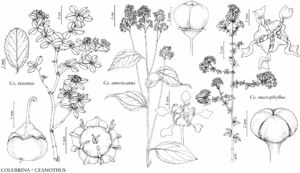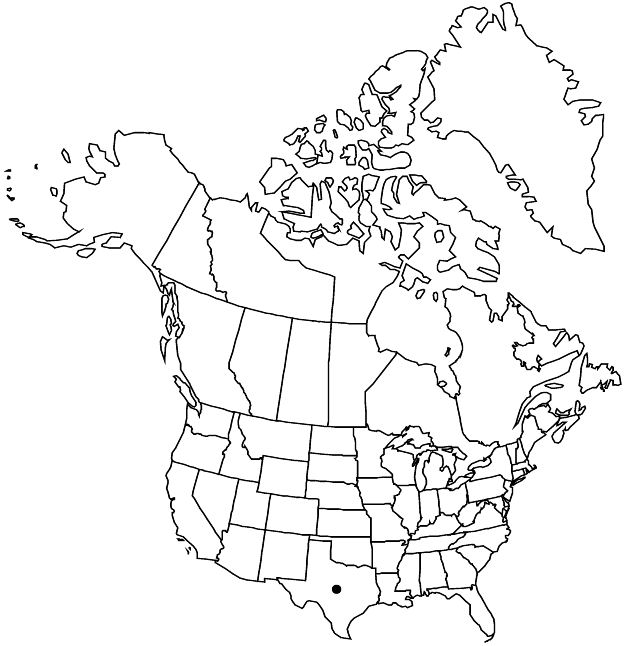Difference between revisions of "Colubrina texensis"
Boston J. Nat. Hist. 6: 169. 1850.
Common names: Texan hog-plum
Selected by author to be illustratedEndemic
Basionym: Rhamnus texensis Torrey & A. Gray Fl. N. Amer. 1: 263. 1838
Treatment appears in FNA Volume 12. Treatment on page 74.
FNA>Volume Importer |
FNA>Volume Importer |
(No difference)
| |
Revision as of 18:22, 24 September 2019
Shrubs or small trees, erect, 1–2(–2.8) m. Stems zigzag, white tomentose-sericeous, becoming glabrate. Leaves deciduous, sometimes fascicled on short shoots; petiole 1–4 mm; blade ovate to elliptic, oblong-obovate, or obovate, 1–3(–4) cm, subcoriaceous, base rounded to subcordate, margins shallowly serrate, teeth 10–20 per side, apex rounded, often apiculate, abaxial surface loosely sericeous, adaxial glabrate; pinnately veined, secondary veins (2–)3–4 pairs, arcuate, basal pair prominent. Inflorescences fascicles, 2–4(–7)-flowered, or flowers solitary; peduncles absent; fruiting pedicels 5–13 mm. Capsules 6–9 mm.
Phenology: Flowering Mar–May.
Habitat: Fencerows, roadsides, disturbed sites, clay banks, shell ridges, loose sand, sandy loam, rocky limestone slopes and crevices, gravel hills, stream banks, alluvial terraces, gravelly flood plains, shrub-grasslands, mesquite shrublands, oak-mesquite, oak-juniper, and mesquite-hackberry woodlands.
Elevation: 0–800 m.
Discussion
Colubrina texensis is widespread in central and southern Texas.
Selected References
None.
Lower Taxa
None.
... more about "Colubrina texensis"
Texan hog-plum +
Tex. +
Fencerows, roadsides, disturbed sites, cla … Fencerows, roadsides, disturbed sites, clay banks, shell ridges, loose sand, sandy loam, rocky limestone slopes and crevices, gravel hills, stream banks, alluvial terraces, gravelly flood plains, shrub-grasslands, mesquite shrublands, oak-mesquite, oak-juniper, and mesquite-hackberry woodlands.juniper, and mesquite-hackberry woodlands. +
Present +
Boston J. Nat. Hist. +
1850 +
Colubrina texensis +
Colubrina +
species +

